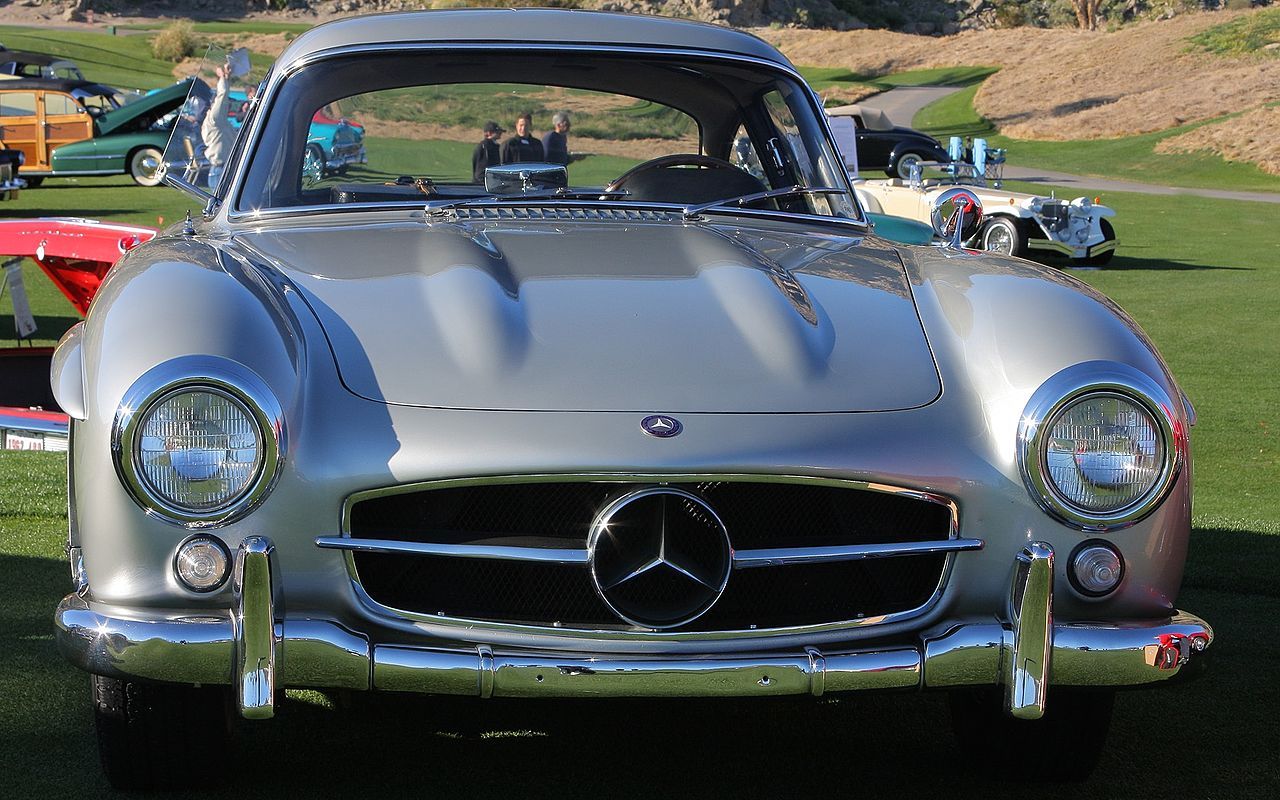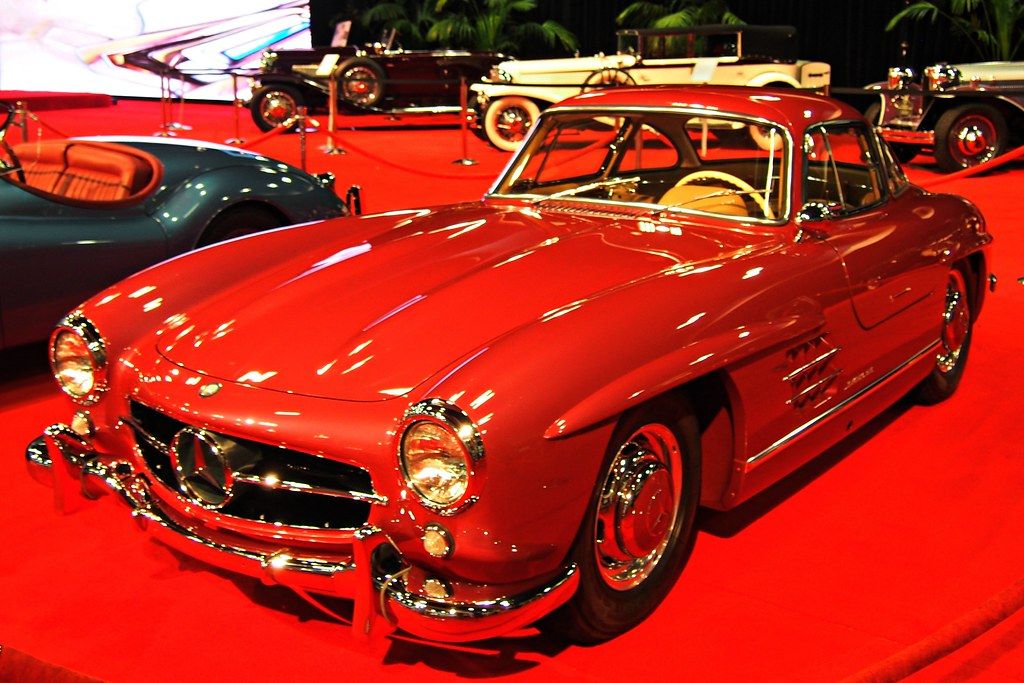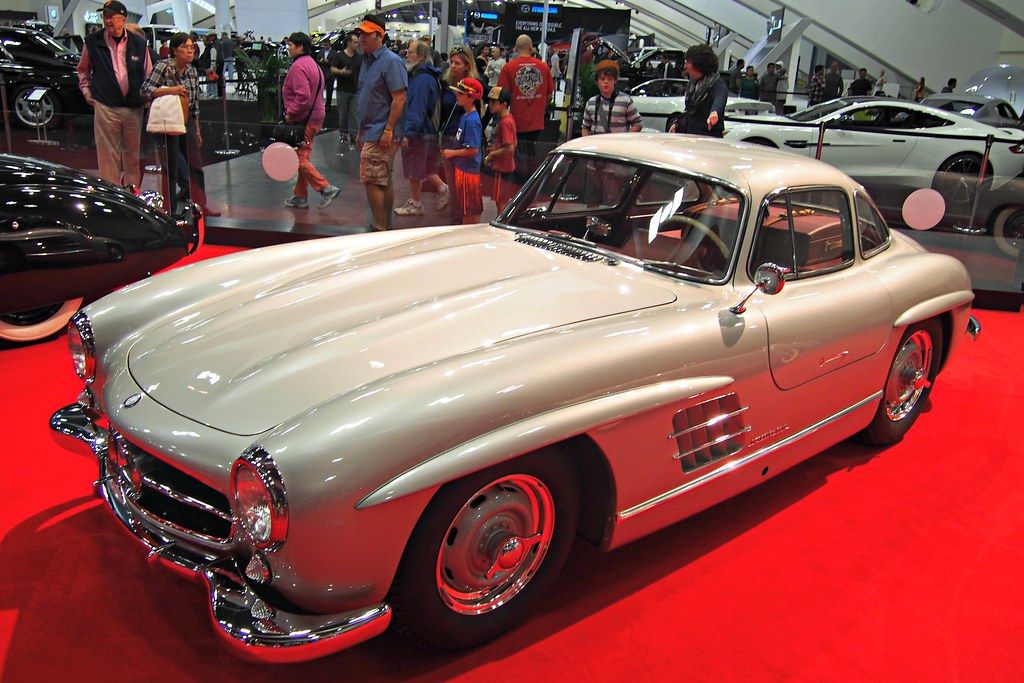Mercedes-Benz is a popular automotive company when it comes to racing cars. Popular for the likes of Formula 1 and various types of racing, there is no wonder that they have taken to producing some incredibly fast sports cars in their time. The Mercedes-Benz 300 SL was one of their models that soon took to being a racing car champion and the fastest car of its time at production.
The coupe model was the one in production from 1954 to 1957. Hence, the 1955 model is a gull-winged coupe that was also popular for having the title "the sports car of the century" in 1999. The SL, which stands for super-light, features a racing-bred light tubular-frame construction among other great features.
More on the best features of the 1955 Mercedes-Benz 300 SL to follow.
The 1955 Mercedes-Benz 300 SL Features A Bigger Engine
In 1955, the team at Mercedes-Benz took to making the 300 SL more competitive. Hence, the car saw a larger engine, which took a jump from a 3.0-liter to a 3.5-liter. The increase in engine certainly did prove to be worth it. Mercedes-Benz's 1955 300 SL took to winning multiple races.
Werner Engel took home the first place win in the 1955 European Rally Championship when driving a 300 SL. Thereafter, Stirling Moss won the title at the 1955 Mille Miglia and John Fitch won his class in a production 300 SL coupe. The 300 SL certainly wasn't shy when it came to winning titles.
The bigger engine took to amping up the overall horsepower of the ride. It saw an increase by 20, which took the overall horsepower to 235.
The 1955 Mercedes-Benz 300 SL Has Solid Passenger Seat Cover
Alongside the increase in engine capacity, the Mercedes-Benz team took to installing more safety features. Some of which were a new roll bar and a custom cowl. However, the best part of the safety enhancement was the solid passenger seat cover.
A new low-profile racing screen was in replacement for a full-width windshield, which took to improving the car's aerodynamics as well as the driver's vision.
The 1955 Mercedes-Benz 300 SL Has A Reduced Weight
Due to the changes in features, as well as the removal of front and rear bumpers, the 300 SL saw a reduction in weight for 1955. The overall curb weight saw a reduction from 1,420 kg to 1,040 kg, which meant better racing for the future of the 300 SL if it were to maintain this weight.
Overall, there is a lot to love about the 1955 model of the Mercedes-Benz 300 SL in particular. Its engine has to be the best feature of the car, seeing as it saw a great jump in the capacity as well as power. Moreover, the new features and reduction in weight did prove to make the 1955 300 SL an incredible racing car. So much so that it took home multiple medals and made amazing memories for the racers that drove 1955 300 SL models.

_03-1.jpg)


